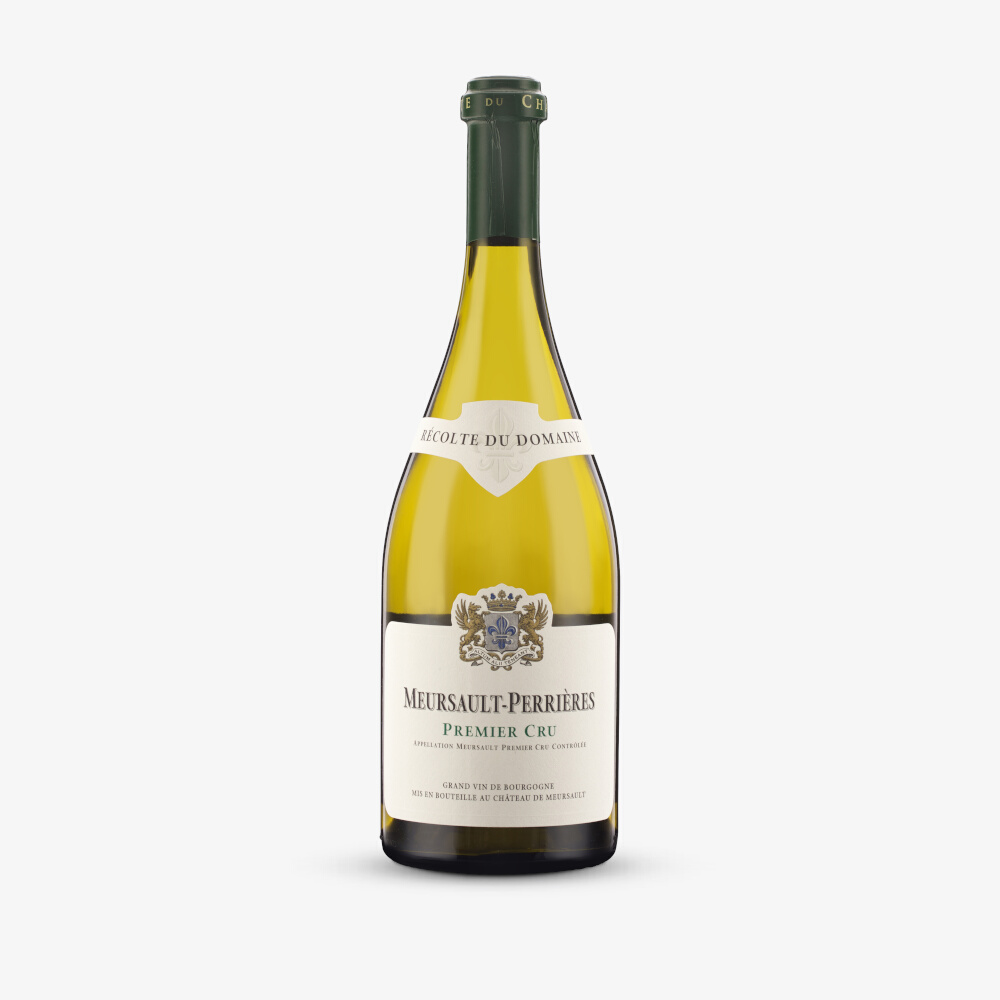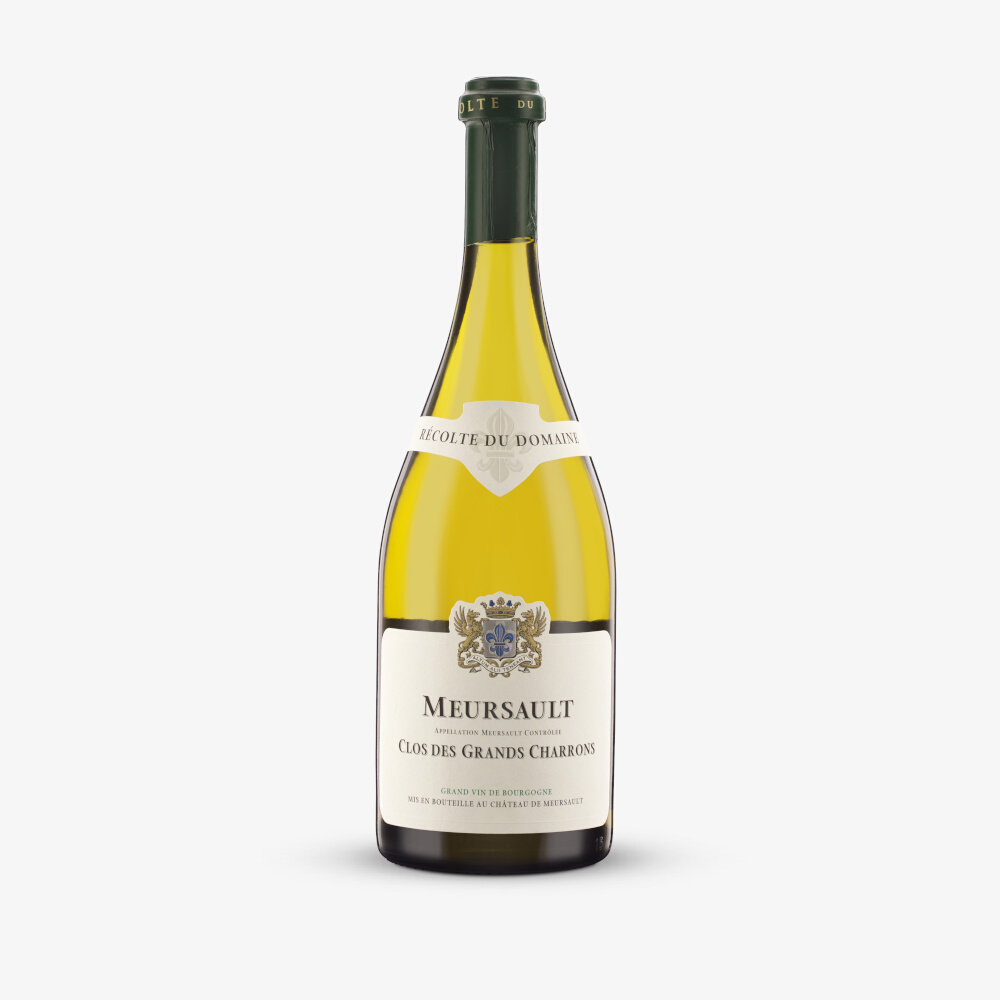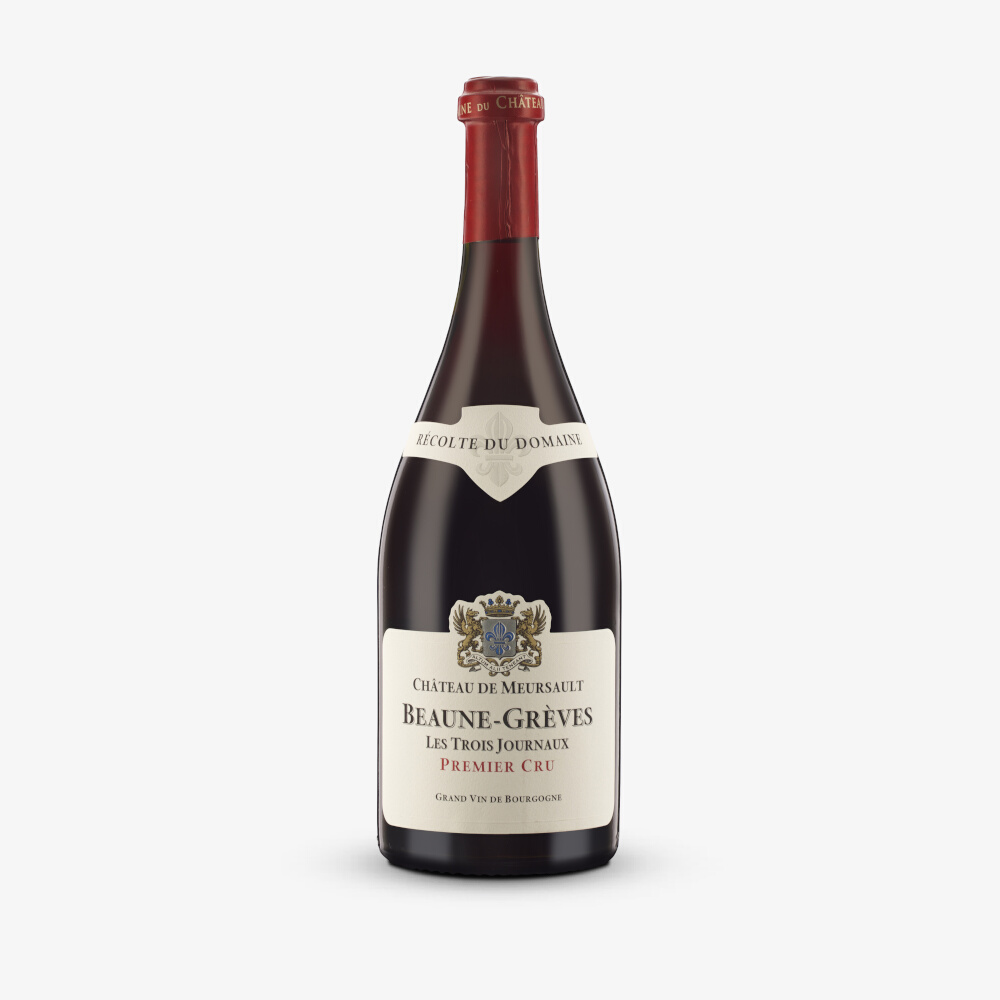
Château de Meursault
A wonderful, historic Domaine that has the Côte de Beaune’s most impressive vaulted cellars. Château de Meursault has for a long time been on the tourist trail and is the impressive venue for the famous Paulee de Meursault in November. Their vineyard holdings have always been the envy of the Côte but a reliance on passing tourist trade, lack of know-how and investment meant that traditionally the wines failed to live up to their promise. However the Château’s fortunes changed in 2012 when it was bought by Olivier Halley with the intention to make it one of the most hallowed estates in Burgundy, money no object. The Château is now firmly on the Burgundy lover’s map. In 2012 Olivier brought in Stephane Follin-Arbelet to run the estate, brother of Frank Follin-Arbelet and former director of Bouchard, Stephane knows a thing or two about what it means to make top quality Burgundy and what it takes to manage a large estate. Conversion to organics, planting cover crops, increasing the size of picking teams (up to 200 people to shorten the harvest period) and lowering yields are just some of the many effective innovations he has brought in. The winemaking is respectful to terroir, new oak ranges from 25-40% and the wines are aged for 15-18 months in the enormous, cool, vaulted cellars underneath the Château. A new star of Burgundy is born. Along with sister estate, Château de Marsannay, this will soon be one of the biggest certified organic estates in the Côte d'Or.
2017 Vintage
A Herculean effort here, and just the sort of vintage that shows how far this estate has come since the change of ownership, and ensuing investment, in 2012. The picking window to get Chardonnay absolutely right is a short one, and so it was in 2017. Château de Meursault despatched 200 pickers on the 28th August and harvested all of their whites within four days. A monumental achievement. “Elegance" and "balance” are the words Château de Meursault’s winemaker, Emmanuel Escutenaire, uses to describe the 2017 wines. It was a year largely characterised by a warm early season, fine flowering period and warm, sunny weather throughout summer. The vines and grapes were in an excellent state of health, waiting for ripened grapes was a crucial but thankfully very permittable goal, thanks to the health of the plants and good weather conditions. Noting that it was particularly important to rely on the taste of the berries rather than must analysis alone, Emmanuel decided to start harvesting the whites early to ensure freshness in the wines. The team started picking the Chardonnays first, commencing on the 28th August, the Pinots followed and harvest lasted a total of twelve days in total. The whites underwent their usual vinification, in barriques, and were then aged sur lie fines in barriques with very little bâtonnage to avoid the wines becoming too heavy. They show a wealth of white and yellow fruit characteristics whilst also showing good complexity and concentration. For their top red cuvées, Trois Journaux, Clos de Chene, Clos des Epenots and Corton, Emmanuel fermented them in tronconic oak vats for the first time and was delighted with the results. Overall the Pinots offer deep, dense ripe fruit flavours and the most sensual and supple of textures and tannic structures. A truly alluring and seductive vintage from one of the great Domaines of the Côte de Beaune.
2018 Vintage
In the words of Château de Meursault winemaker Emmanuel Escutenaire; 2018 was a “Millesime de grand satisfaction!” Indeed it was an important year for Château de Meursault, for not only was 2018 great for the estate, qualitatively, it was the first year of conversion to organic farming with the hope that as of the 2019 vintage they will become the biggest estate in Burgundy to be officially certified. Quite some feat considering how much work this involves across the 107ha that make up the Château de Meursault and Château Marsannay estates! You can only admire what they achieve here. As an idea of the estate’s scale and drive, consider that in the warm 2018 vintage they had employed two teams of 55 pickers each across the two domaines. Not only was harvesting early, important in 2018, so too was the speed and mobility with which you did so, to ensure that every grape was brought in as fresh as possible. The vintage began on the 24th August here and finished on the 6th September. Stephane Follin-Arbelet explained how great the health and quality of grapes were at harvest time, not a spot of disease on the vines, and also how surprisingly fresh the fruit was – in his words “they were fresh and juicy, much less heavy tasting than other warmer vintages like 2015, for example.” Apart from cracking the logistical puzzle, another aspect that helped keep freshness in the grapes, Stephane believed, was the vintage’s naturally high yields, which helped slow ripening down. Though his final cautionary note was that you had to keep some check on quantities nonetheless, otherwise you risked dilution in the final wines. These 2018's may have been picked early but both the reds and whites show impressively clear, fresh lines and focus. Expressive vineyard characteristics are vividly interwoven through the ripe, alluring fruit. A herculean effort.
2019 Vintage
A smaller vintage than usual, here, of roughly half a crop. An accumulation of frost, flowering and drought effects were the cause. 2019 saw Château de Meursault’s second year of conversion to organic farming; no mean feat across 100 hectares and 200 individual plots (including those of Château de Marsannay.) A combination of this, a focus on soil health through planting a diverse array of cover crops, and their rigorous, plot by plot, attention to detail, has resulted in some of the most magnificent Chateau de Meursault wines we have tasted. Harvest began in earnest on 7th September, and lasted no more than 10 days. Again, impressive given the size of the estate. One really gets the sense, when tasting the wines, that they were picked absolutely “a point”, showing incredible precision of flavour and vitality, to sit along side the the naturally ripe, sunny fruit that so characterises the vintage. Estate manager Stephane Follin-Arbelet finds the wines difficult to compare with any other single vintage, considering them “a mix of the richness of 2018, with the freshness of 2017.” Winemaking continues to be low key and dialled-down, with Stéphane noting that “if you get the viticulture right and picking date, most of the work is done. We then try to do nothing in the winery.” Whole bunch pressing with pre-oxidation of the must is the order of the day. Then after a settling, the wine is racked in to barrel with more or less lees depending on their quality. Élevage is relatively long, for up to 18 months to avoid filtration, with a maximum of 30% new oak.
2020 Vintage
The Château de Meursault revolution continues at a pace, for this is their most outstanding line up yet. Their unerring focus on sustainability and biodiversity is paying dividends in the vineyard, whilst other measures including huge resource at harvest time to be ever more precise on picking dates; spontaneous ferments and lowering of sulphur; reduction of new oak percentages to less than 30%, and lighter filtrations, have all conspired to produce phenomenal results. These are the most crystalline and transparent whites we can ever remember tasting at this Château. Estate manager Stephane Follin-Arbelet notes that “the good point about 2020 is that it shows, even in early years, you can keep freshness in modern, hot vintages. The problem is the vines are suffering long term and we need to keep them alive.” No one takes their impact on the plant and the surrounding environment more seriously than Château de Meursault. In 2022 they are on course to complete their third and final year of conversion to full organic certification, which will make them the largest estate in Burgundy to achieve this.
2021 Vintage
With a rueful smile Stephane Follin remarked “this is not a tiring vintage, you can drink a lot of these wines”. Which would be entirely true, the wines are as transparent, elegant and bright as we can remember, were it not for the fact that’s there’s simply not a lot of these wines to be drunk. Just half a crop overall for Château de Meursault, with the losses most keenly felt in the estates top Meursault vineyards where on average, just 10% of a crop was produced. A shame, for the whites are excellent. For the reds, the situation is less acute, and this is good news for we’ve never tasted more delicate, luminous wines here. Brimming with energy and freshness, pure flavours are supported by supple tannins and sensual textures. We may sound like a broken record, but production at Château de Meursault is getting better and better with every passing year.
2022 Vintage
Emmanuelle Escutanaire, surprisingly bright-eyed the morning after the rugby, was similarly chuffed with the vintage at Chateau de Meursault. The big news here is that the estate, alongside Ch. de Marsannay, is fully certified organic as of the 2022 vintage. “And this is just the beginning,” estate director Stéphane Follin-Arbelet assured us. “We’ve been introducing an extra 20ha of cover crops each year to help the plots planted to less drought resistant root stocks. Interestingly, when we moved to organic, we thought we’d get smaller yields. Five years in we realise this simply isn’t the case”. Harvest began on the 26th August in stable warm conditions. Divining the harvest date was straight forward and the resulting wines all clock in at 13.5% more than reasonable in today’s money. The whites here have established themselves as firm J&B favourites – combining body and drive to great effect. In 2022 the much-loved Terroir d’Exception tastes more like a baby Perrières than ever before, while Charmes Dessus could be held up as a reference point of the qualities that only white burgundy can achieve – “It’s a Bentley!” Stéphane remarked – by which we think he meant a stylish, powerful, deeply satisfying wine. That, at least, was our take.
2023 Vintage
Emmanuel Escutanaire is a softly spoken winemaker who generally lets his whites speak for themselves, as well they can. Harvest here started on the 5th September for the reds and the 7th for the whites, with a healthy crop, in both size and condition, arriving into the winery. Choosing to crush a little harder than usual, to extract as much as possible from his Chardonnay skins, and then taking plenty of lees to barrel, but eschewing battonage, Emmanuel has crafted a range of wines with impressive structures and flowing fruit profiles. They are built in the classical Chateau de Meursault mould, with rich deep fruit, plenty of body, but also tapering finishes. An ever-reliable estate.








